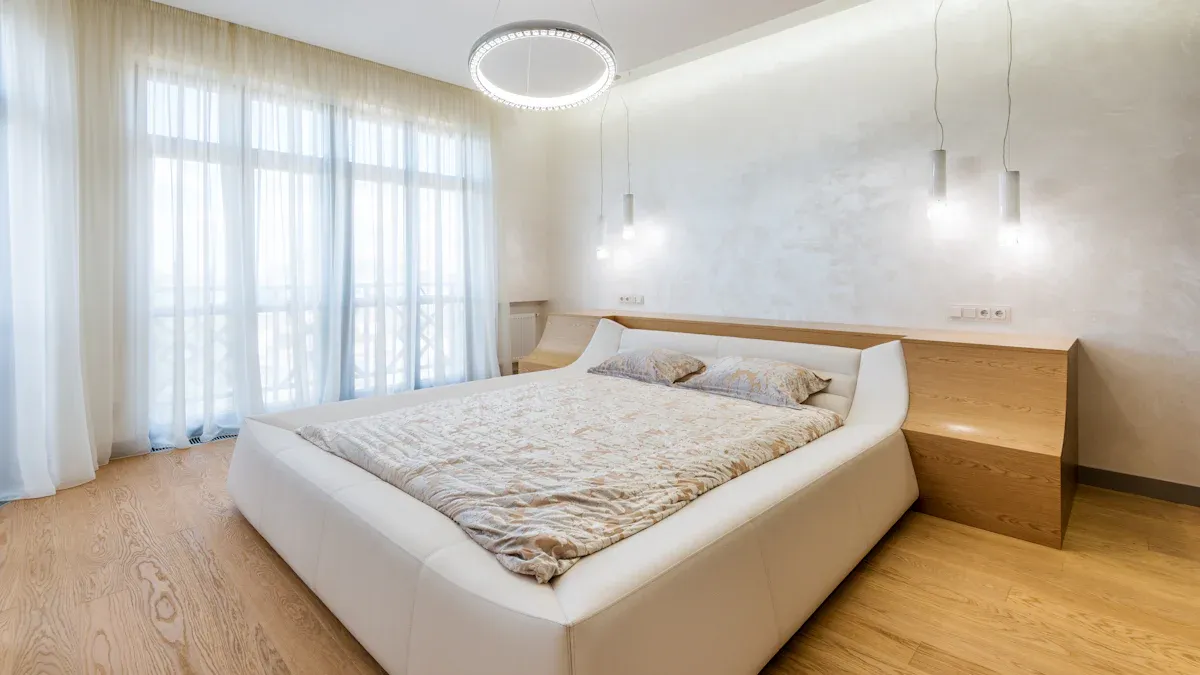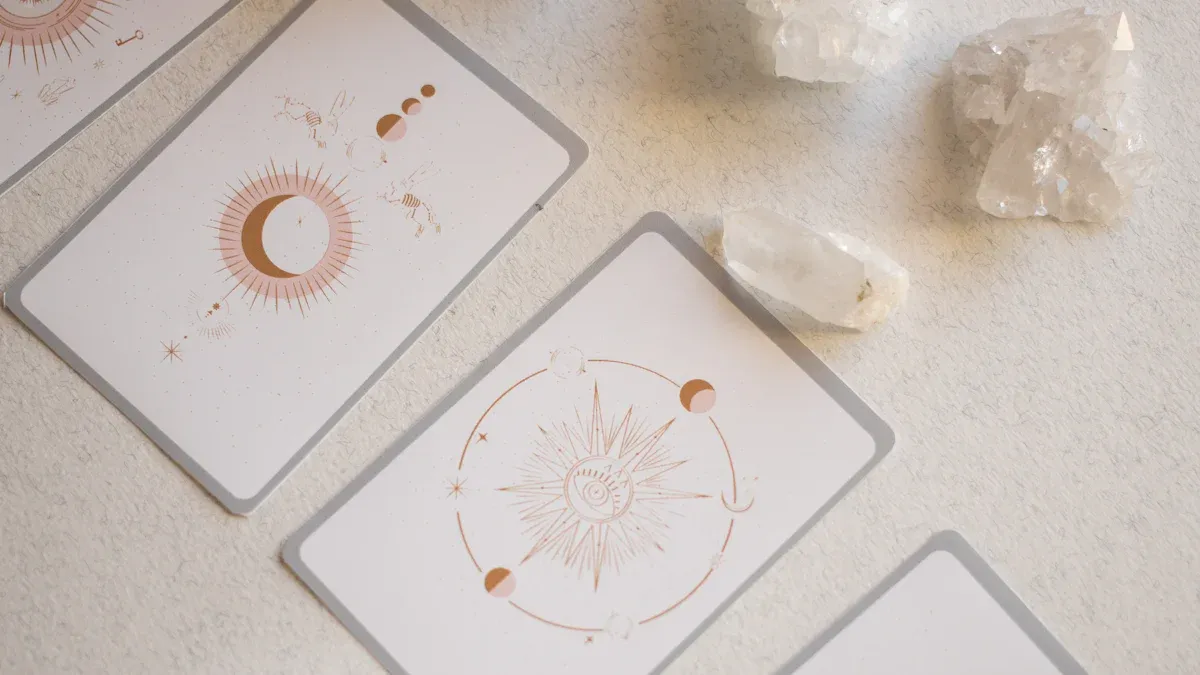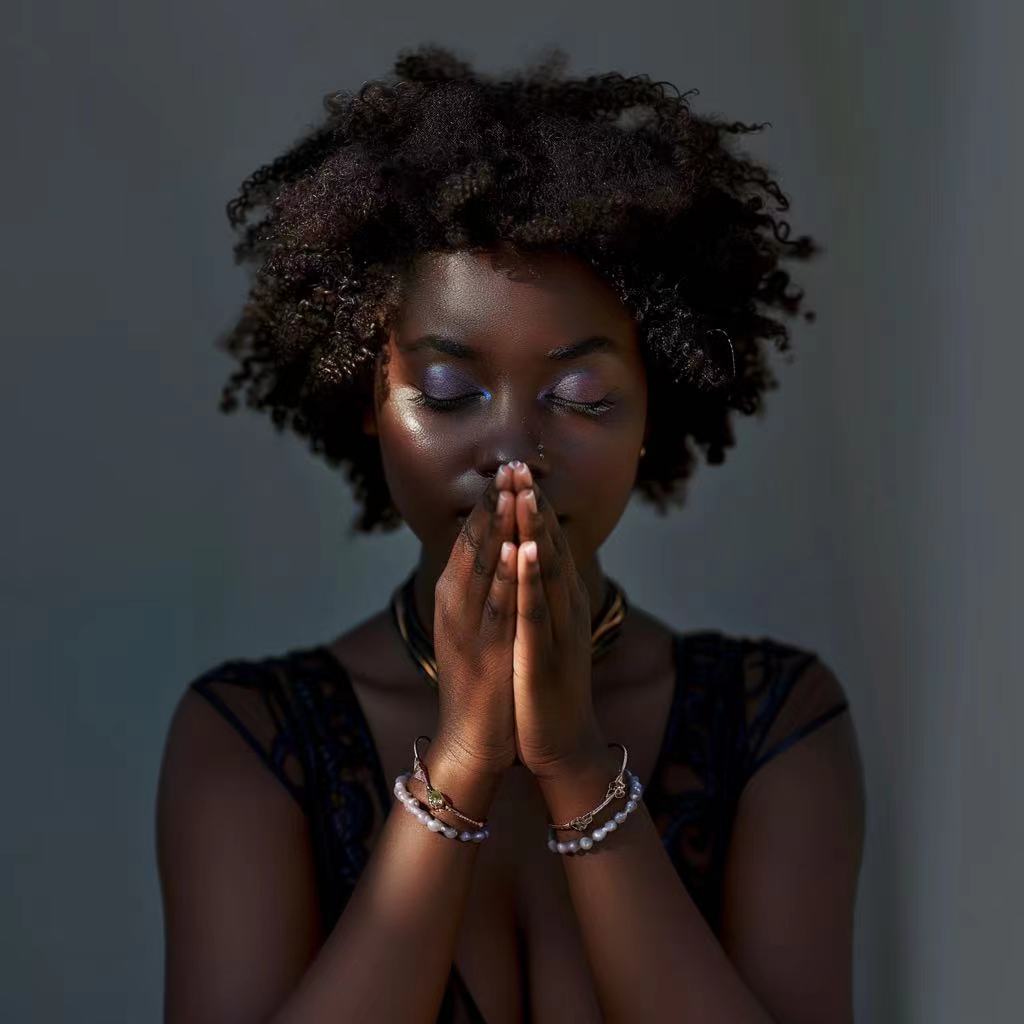
If you want the best color for a bedroom in 2025, try gentle tones like soft blue, green, or creamy earth shades. These feng shui colors for bedroom spaces calm your mind and help you relax after a long day. Studies show that calming hues can lower your heart rate and support better sleep, giving your wellbeing a real boost. Before you pick a color, ask yourself what you want most from your bedroom feng shui—peace, romance, or more energy. Choose colors that match your goals and avoid too many bright shades, which may disturb your rest.
Key Takeaways
Choosing the right colors for your bedroom can create a peaceful, relaxing, and inviting atmosphere while enhancing energy balance.
-
Calming Colors:
Opt for soft colors like blue, green, and lavender for a peaceful environment.
Avoid bright colors like red and orange, as they can disrupt sleep and relaxation.
-
Feng Shui and Energy Balance:
Match your bedroom colors with its compass direction for better feng shui and balanced energy.
-
Warm and Welcoming Tones:
Use earthy tones like cream and coral to make your room feel cozy and inviting.
-
Purposeful Color Choices:
-
Consider your goals when selecting colors:
Relaxation.
Romance.
Boosting energy.
-
Feng Shui Color Basics
Color and Energy
Colors do more than just look pretty on your walls. They shape how you feel every time you walk into your bedroom. When you pick the right shades, you can create a space that helps you relax, sleep better, or even feel more cheerful. For example, calm hues like pale blue, gentle green, and creamy neutrals support restful sleep and emotional stability. If you want a peaceful vibe, these are great choices.
Tip: If you have trouble sleeping or feel stressed, try lighter or neutral shades. These colors help slow down your mind and make it easier to unwind.
On the other hand, vibrant colors like red or orange can fill your room with energy. While these shades might look exciting, they can also make it hard to settle down at night. Experts suggest using bold colors only as small accents, not as the main color in your bedroom.
Here’s a quick look at how some popular colors influence mood and energy:
Color |
Meaning/Effect |
|---|---|
White |
Increases goodness and hope; brings clarity and purity. |
Yellow |
Boosts optimism and happiness; linked to health. |
Green |
Fosters growth and balance; best in muted tones for bedrooms. |
Blue |
Connects to calm and healing; helps with social interactions. |
Purple |
Tied to prosperity and spirituality; linked to wealth. |
Red |
Raises energy; linked to passion—use sparingly. |
Pink |
Relates to romance and nurturing; encourages partnership. |
Gray |
Represents balance and calm; often needs accent colors. |
Black |
Feels sophisticated but can seem heavy; linked to power and reflection. |
The Five Elements
Feng shui colors for bedroom spaces connect to the five elements: Wood, Fire, Earth, Metal, and Water. Each element has its own set of colors and brings a special kind of energy to your room.
Element |
Associated Colors |
|---|---|
Wood |
Green, Brown |
Fire |
Red, Purple |
Earth |
Yellow, Orange, Brown |
Metal |
White, Silver, Gold |
Water |
Black, Blue |
Wood: Use green or brown for growth and harmony.
Fire: Add touches of red or purple for passion and excitement.
Earth: Choose yellow, orange, or brown for stability and comfort.
Metal: Try white, silver, or gold for clarity and focus.
Water: Pick blue or black for calm and reflection.
When you match colors to these elements, you help balance the energy, or Qi, in your bedroom. This balance can make your space feel just right for sleep, relaxation, or even romance.
Feng Shui Bedroom Colors

Choosing the right feng shui bedroom colors can change how you feel every time you step into your room. Let’s look at the best feng shui colors for bedroom spaces in 2025, how they work, and which ones you should avoid for good feng shui.
Calming Colors
If you want your bedroom to feel peaceful, start with calming shades. Soft blue, gentle green, and lavender are top picks for feng shui bedroom colors. These colors help you relax and make it easier to fall asleep. Research shows that blue, green, and lavender can lower your heart rate and help your mind slow down. People in blue rooms often feel more focused and calm. Green light can even help you fall asleep faster, according to a study from the University of Oxford. Lavender is famous for its calming effect, making it perfect for bedrooms.
You can also try a wellness-inducing blue for a fresh and modern look. Cool colors like blue, green, and purple are linked to relaxation and stress relief. They work well in bedrooms because they create a soothing space where you can unwind.
Here are some calming feng shui bedroom colors to try:
Soft blue: Brings peace and focus, helps you relax.
Gentle green: Supports balance and growth, reduces stress.
Lavender: Inspires creativity and serenity, perfect for winding down.
Pink: Adds a gentle, nurturing energy, great for romance and comfort.
Tip: Use these colors on your walls, bedding, or curtains to create a restful vibe.
Earthy Tones
Earthy tones are another great choice for feng shui bedroom colors. Shades like copper, coral, and cream help you feel grounded and safe. These colors make your room feel cozy and welcoming, which is important for good sleep and comfort. Feng shui experts say that warm earth tones foster a tranquil and inviting energy. When you use copper, coral, or cream, you set up a space that feels peaceful and secure.
Let’s look at some popular earthy tones and their meanings:
Color |
Element |
Meaning |
Where to Use |
|---|---|---|---|
Warm Terracotta |
Earth |
Stability, nurturing, security |
Family, Health, Helpful People |
Vibrant Coral |
Fire |
Joy, passion, enthusiasm |
Fame, Love, Children |
Cream |
Earth |
Comfort, calm, restfulness |
Any bedroom area |
You can also mix in warm neutrals like latte, off-white, and sandy tones. These colors help you relax, reduce stress, and create a restful environment. They are ideal for bedrooms where comfort is key.
White
White is a classic choice for feng shui bedroom colors. It stands for purity, clarity, and a fresh start. Using white in your bedroom brings a sense of calm and helps you wake up feeling renewed each morning. White also makes your space feel bigger and brighter, which can lift your mood.
Here’s why white works so well in bedrooms:
White promotes calmness and tranquility.
It helps you sleep better by creating a peaceful setting.
White brings a sense of purity and innocence.
It gives your room a fresh, clean look every day.
You can use white on your walls, bedding, or furniture. Try layering different shades of white with soft textures to keep your room from feeling too plain. Add touches of pink or blue for a gentle pop of color.
Colors to Avoid
Not all colors work well in a bedroom. Some shades can make it hard to relax or sleep. According to feng shui bedroom rules, you should avoid bright reds, oranges, and neon colors. These shades are too stimulating and can keep your mind active when you need to wind down.
Here are some colors to avoid and why:
Color Type |
Effect on Sleep |
|---|---|
Red |
Too stimulating, leads to restlessness |
Orange |
Activates mental activity, not good before bed |
Bright Yellow |
Keeps the mind alert, not soothing |
High-Contrast/Neon |
Causes sensory overload, disrupts settling down |
Deep Blue/Black |
Can cause worry or overwhelm |
Bright, neon shades are overstimulating and disrupt restful environments.
Activating colors like reds, deep pinks, and burnt oranges can lead to restless sleep.
Deep blues and blacks may cause feelings of worry and overwhelm.
If you want good feng shui, stick with soft, calming shades and avoid colors that make your room feel too busy or intense. This way, you support your comfort, wellness, and sleep every night.
Bedroom Direction and Personal Goals
Bedroom Direction
Did you know your bedroom’s compass direction can help you pick the best feng shui colors for bedroom harmony? Each direction connects with a different element and color palette. When you match your room’s direction with the right colors, you invite good feng shui and create a space that feels just right.
Here’s a quick guide to help you choose:
Direction |
Recommended Colors |
Feng Shui Element |
|---|---|---|
East |
Green, Brown, Earth Yellow, Blue, Black |
Wood, Earth, Water |
South |
Red, Pink, Orange, Purple, Magenta, Yellow, Green, Brown |
Fire, Wood |
West |
White, Gray, Earthy Yellow |
Metal |
North |
Blue, Black, White, Gray |
Water, Metal |
East-facing bedrooms love green and brown for growth and balance. You can also add blue or black for a touch of calm.
South-facing rooms shine with red, pink, or orange. These colors bring energy and warmth.
West-facing spaces feel best with white, gray, or earthy yellow. These shades support comfort and clarity.
North-facing bedrooms work well with blue, black, white, or gray. These colors help you relax and support restful sleep.
Tip: Stand in your bedroom doorway with a compass app to find your room’s direction. Then, pick colors that match the energy you want.
Personal Goals
Your bedroom should reflect your personal goals. Do you want more relaxation, romance, or energy? Feng shui bedroom rules say your color choices can help you reach these dreams.
For relaxation, choose earthy colors like beige, tan, or soft yellow. These shades bring comfort and help your mind slow down.
If you want romance, use pink or purple accents. Avoid too much red or blue on walls or sheets, but you can add them in small decor pieces.
To boost energy, try touches of orange or magenta. These colors wake up your senses and make mornings brighter.
If restful sleep is your goal, keep your space clutter-free and use calming colors like soft blue or pale green.
For couples, purple and red can create a romantic mood. Orange can add a spark of passion. Singles might prefer soothing colors that match their own style and bring balance.
Remember, good feng shui comes from matching your colors to both your room’s direction and your personal needs. When you do this, you create a bedroom that feels peaceful, balanced, and full of positive energy.
Applying Feng Shui Colors

Paint and Decor
You can bring feng shui colors for bedroom harmony into your space with a few simple changes. Start with your walls. Soft shades like blue, green, or beige work well because they mirror nature and help you relax. Try painting your ceiling a calming color, too. This trick makes the whole room feel peaceful. When you pick wall art, choose scenes from nature or gentle patterns. Avoid animal images, which can feel intimidating.
Decor matters just as much as paint. Use bedding, curtains, and rugs in gentle tones. Add a few pink or blue pillows for a pop of color. Warm lighting helps create a restful mood. You might want to use dimmers so you can control the brightness at night.
Tip: Always test paint samples at different times of day. Light changes how colors look!
Layering Colors
Layering colors gives your bedroom a balanced, cozy feel. Mix earthy tones like cream, cocoa, or coral with soft pastels such as light blue or pale green. This bedroom color combination brings both comfort and freshness. You can use two or three shades throughout the room for harmony. For example, try cream walls, blue bedding, and pink accents.
Soft neutrals set a calm base.
Pastel blues and greens add a peaceful vibe.
Pink throws or pillows bring gentle energy.
This mix follows good feng shui bedroom rules and helps Qi flow smoothly. You create a space that feels safe and welcoming.
Common Mistakes
Some color choices can upset the balance in your bedroom. Here are mistakes to watch out for:
Using too much red, orange, or neon. These colors feel exciting but can make it hard to sleep.
Picking deep blue or black as the main color. These shades may cause worry or make the room feel heavy.
Forgetting about lighting. Bright white bulbs can make even soft colors look harsh.
Overloading the room with too many different colors. Stick to a simple palette for good feng shui.
Remember, good feng shui comes from thoughtful choices. Keep your space calm, balanced, and true to your style.
Choosing feng shui colors for bedroom harmony is simple when you follow a few easy steps. Start with calming earth tones like yellow, beige, or soft green. Add neutrals such as cream or gray for relaxation. Try light blue for wellness or lilac for a touch of prosperity. Remember, feng shui bedroom rules suggest you avoid stark white or bright neons.
Don’t be afraid to experiment! Pick colors that match your goals and help Qi flow for better sleep and balance.
Quick-Reference Checklist:
Use calming earth tones (yellow, beige, green, brown)
Choose soft neutrals (cream, gray, beige)
Try light blue, teal, or lilac for wellness and prosperity
Limit bright colors to small accents
Avoid stark white and neon shades
FAQ
What if I share my bedroom with someone who likes different colors?
Try blending your favorite shades. You can use soft blue bedding and add your partner’s favorite green pillows. Mixing calming colors creates harmony and keeps both of you happy.
Can I use patterns or just solid colors for good feng shui?
Patterns work well if you keep them simple. Choose gentle stripes or soft florals. Avoid busy or loud designs. Simple patterns help Qi flow and keep your room peaceful.
How often should I change my bedroom colors?
You do not need to change colors every year. If your goals or mood change, update your space. Small changes, like new pillows or curtains, can refresh your room without a full makeover.
Do feng shui colors really help with sleep?
Yes! Calming colors like blue, green, and cream help your mind relax. Studies show these shades lower stress and support better sleep. Try them and see how you feel.
Is it okay to use black or dark colors in my bedroom?
Use dark colors in small amounts. A black lamp or dark pillow adds style. Too much black can feel heavy and block Qi. Stick with lighter shades for most of your room.






